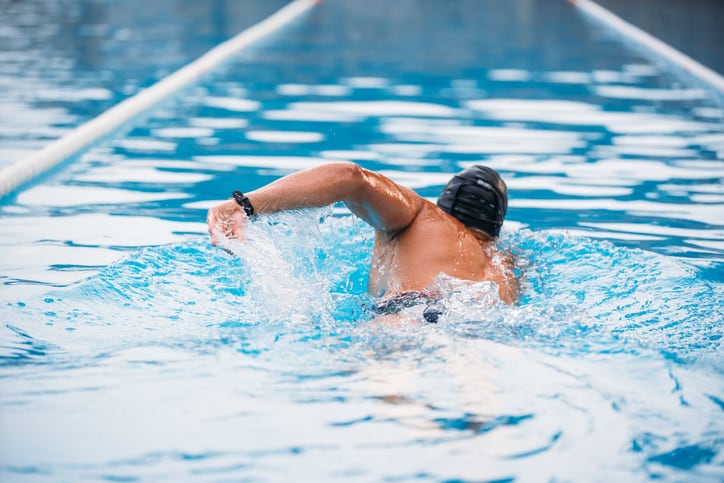Researchers from the Sport Science and Sport Medicine Team at British Swimming and other UK institutions used data from yearly vitamin D screenings in British world-class swimmers.
“This study reports the three-year concentrations in world-class British swimmers, which has never been explored before,” they wrote.
“The findings suggest that intervention via sports nutritionists, at least in part, eradicated vitamin D deficiency within one calendar year and helped maintain the eradication over a three-year period.”
However, the study highlighted that the consistent yearly increases led to 35% of the swimmers having a high vitamin D level, which raises potential concerns for toxicity. Therefore, the researchers recommended regular testing to assess individual responses to the supplement.
Vitamin D requirements for swimmers
Experts in the UK recommend 400 IU of vitamin D daily to avoid deficiency. To achieve this through diet, swimmers would need to consume five large eggs, 85 g salmon or 70 g herring, which the researchers note is often unachievable.
Up to 90% of vitamin D is synthesized through exposure to sunlight. However, poor weather conditions, limited daylight hours in the UK and extensive indoor training may cause British swimmers to have insufficient vitamin D.
Previous research suggests a 13% decline in serum 25(OH)D concentrations in high-level adolescent British swimmers from October to January. The researchers pointed out that studies have indicated a high prevalence of vitamin D deficiency among swimmers, even in warmer climates such as Israel.
Maintaining adequate vitamin D is associated with less frequent and severe upper respiratory tract infections (URTI) in endurance athletes in the winter.
“Unpublished data from within this group found that URTIs accounted for 50% of missed training sessions in the 2016–2017 swimming season, with 56% of the world-class cohort experiencing at least one URTI instance,” the study noted.
Indoor athletes are encouraged to supplement 4,000 IU of vitamin D daily in the autumn and winter to maintain sufficient levels throughout the competitive season.
Despite this, the researchers reported that their study is the first to examine the cumulative effect of this supplementation on swimmers’ annual vitamin D status.
Study details
Researchers used observational data from general health screenings of 29 world-class British swimmers between the ages of 16 and 30. As part of the screening, their blood samples were collected in September over three consecutive years between 2018 and 2020.
The swimmers were encouraged to take vitamin D per the recommendations and guidance from the British Swimming’s Chief Medical Officer and the UK Sports Institute.
They were assigned 4,000 IU of vitamin D daily as D3 capsules provided by Healthspan throughout the autumn/winter season, with specific individual timeframes based on their September screening results. No further advice was given about additional supplementation, so participants may have consumed an extra 200 IU through daily multivitamins.
The results revealed that the mean 25(OH)D concentrations increased across the sampling timeframe, with a 50% increase in the two-year supplement period. Insufficient vitamin D levels were more than halved every year, with no participants being deficient after 2018.
“Moreover, mean serum 25(OH)D increased on a yearly basis until almost all swimmers (93%) displayed a sufficient vitamin D status (>75 nmol∙L−1) by the 2020 timepoint,” the researchers wrote.
However, as much as 35% of participants had a serum 25(OH)D over 125 nmol∙L−1, and the researchers noted that it is unclear whether this higher level is beneficial or concerning for athletes.
They called for further research to investigate if vitamin D may support URTIs and swimmers’ training adaptations. Additionally, they recommended more frequent testing throughout the athletes ’ competitive season to ensure that levels remain adequate.
Source: Nutrients 2025, 17(7), 1270. doi: 10.3390/nu17071270. “Annual Vitamin D Status of World-Class British Swimmers Following a Standardised Supplementation Protocol for Three Years”. Authors: J.W. Newbury et al.

